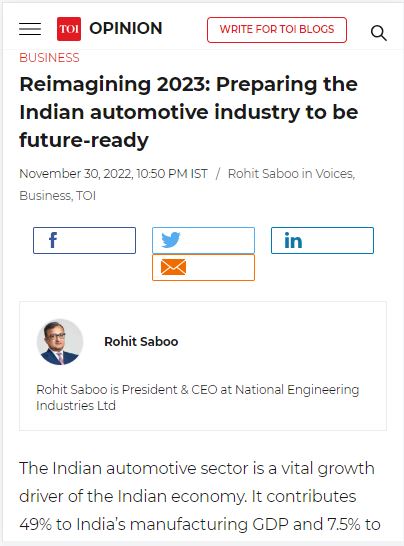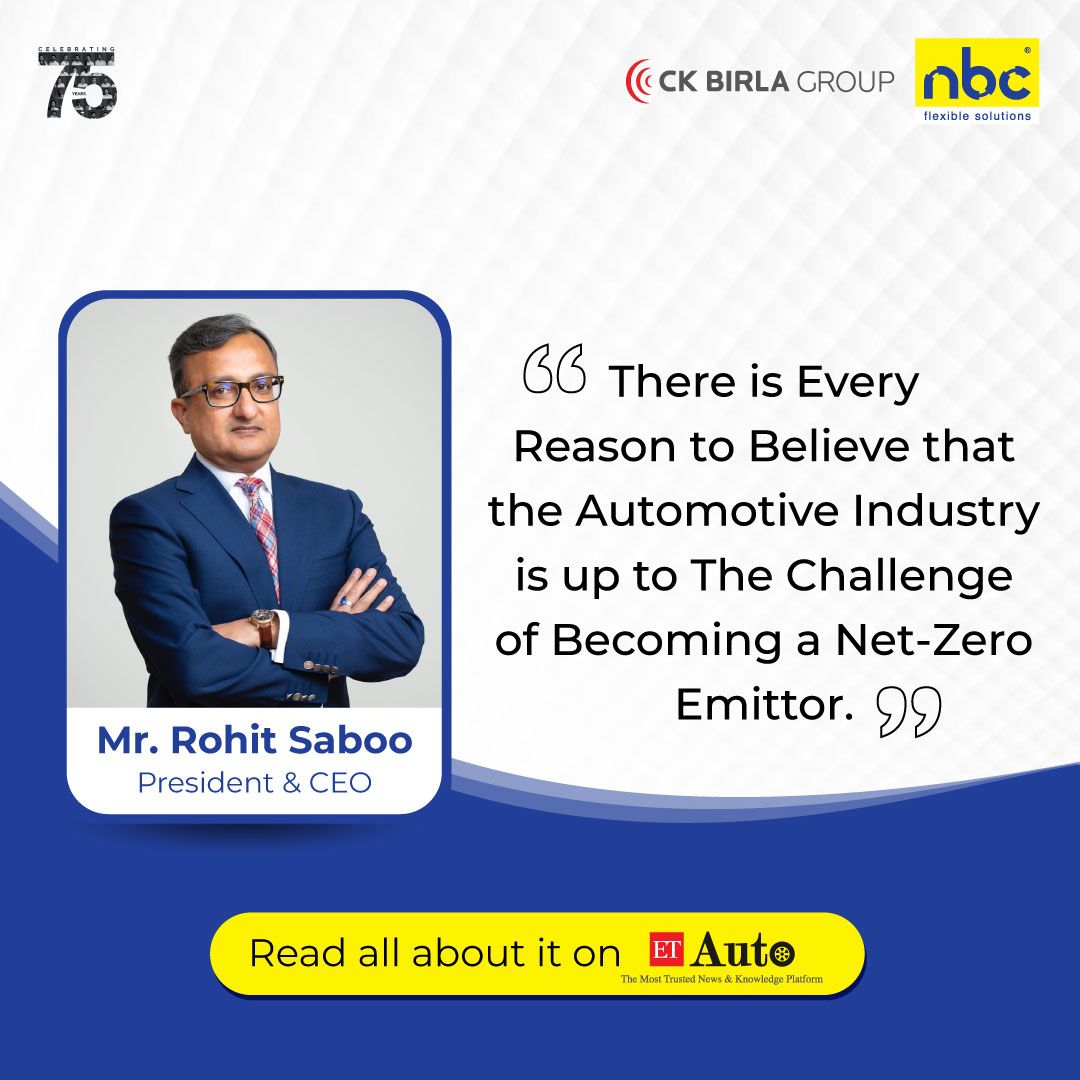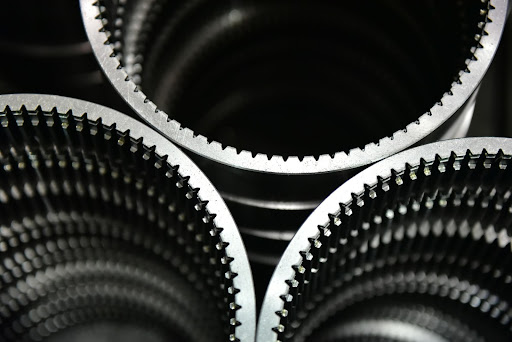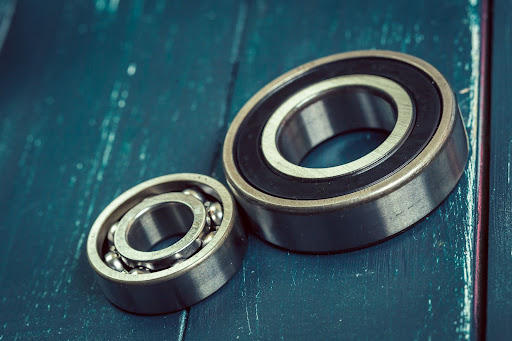
Author: Team NBC




Bearings for printing machines must be precisely matched to each customer application to guarantee the finest possible print quality.
The main cylinders of sheet-fed and web-fed printing machines and presses are where printing machinery bearings are most frequently employed. These bearings in paper industry fulfill the three immediate demands of printing machines: high productivity, low maintenance costs, and the best print quality possible. This is because of their high load-carrying capacity, rigidity, accuracy, and precision adjustment capabilities.
Because printing machine bearings are often custom-made for each application, the bearing supplier must collaborate closely with the printer’s equipment maker. The bearings are thereby perfectly tailored to the client’s needs. Finding the best technological and financial solution, though, takes work.
Types of Bearings in Paper Industry
There are various types of bearings used in the paper printing industry, including:- Deep groves ball bearings: The most popular bearings in paper industry are deep groove ball bearings. They are perfect for the paper feeding system since they withstand high temperatures and speeds.
- Angular contact ball bearings: Because they can support both radial and axial loads, they are perfect for applications where the load is not solely radial. They are frequently utilized in the printing cylinder and other precise sections of the printing press.
- Cylindrical roller bearings: These are frequently utilized in the printing press’s impression cylinder and other components that need to carry heavy loads.
- Spherical roller bearings: These bearings are perfect for applications where misalignment is a concern. They are frequently utilized in the ink fountain and other printing press parts because they can support both radial and axial stresses.
- Needle roller bearings: These bearings have a narrow cross-section and are made to withstand heavy radial stresses. They are frequently utilized in the ink roller and other restricted-space sections of the printing machine.
Role of Bearings in the paper industry
The paper printing business relies heavily on bearings. To ensure that numerous components move smoothly and precisely, bearings are significantly used in paper printing machines. The paper feeding system is one crucial area where bearings are used. The printing press receives a constant paper supply thanks to the paper-feeding mechanism. The paper rolls are supported by bearings, ensuring smooth, vibration-free movement. The printing cylinder is another essential application for bearings. Ink is transferred from the printing plate to the paper via the cylinder. For high-quality printing, the cylinder must rotate precisely and smoothly, which is ensured by bearings in this region. Bearings are also utilized in the ink fountain, ink roller, and impression cylinder, in addition to these locations, in the printing press. Bearings assist in lowering friction, absorbing shock, and ensuring correct movement in each area. Overall, using bearings in the paper printing business is essential for producing prints of the highest quality. Bearings guarantee that the printing press runs smoothly and precisely, producing high-quality printed materials.Why can you trust NBC Bearings?
Leading Indian bearing maker NBC (National Engineering Industries Ltd.) has a long history of producing high-quality bearings. The paper industry may benefit from selecting NBC bearings for the reasons listed below:- High-quality standards: NBC bearings are produced in accordance with global quality standards, guaranteeing dependable performance. They go through stringent testing and quality control procedures to ensure they adhere to the strict standards of the paper industry.
- Customization: The unique needs of the paper industry, such as high-speed applications, high-temperature settings, and load-carrying solid capability, can be met by tailoring NBC bearings.
- Technical know-how: NBC has a team of skilled experts who can offer technical support and help decide which bearing is best for a given application. They can assist in enhancing the printing press’s efficiency because they have an in-depth understanding of the paper business.
- Longevity: NBC bearings are made to survive the demanding operating conditions in the paper industry, such as high temperatures, heavy loads, and rapid speeds. They are constructed with premium materials and undergo rigorous quality control procedures to ensure their sturdiness and lifespan.
- Cost-effectiveness: With competitive prices and little maintenance needs, NBC bearings provide a cost-effective solution for the paper sector. They have a long service life, which minimizes downtime and lessens the need for frequent replacements.

Due to the higher dependability, lower complexity, and reduced environmental effect of NBC high-temperature bearings and bearing units, these bearings in extreme environments are appropriate for use in trucks, rolling hearth furnaces, and bakeries.
Expectations for the bearings in extreme environments used in vacuum environments have increased due to recent developments in the process technologies used in semiconductor production and other industrial sectors. These days, such bearings must be safer, more robust, and corrosion-resistant. In response, NBC Bearings created a bearing technology for ultra-high vacuum settings that uses solid lubrication.
Bearing Life
It is customary to calculate bearing life as follows. The next step is establishing the bearing size after choosing the right kind for the application. The catalog load ratings determine the basic rating life based on the loads and speeds, or duty cycle, and the bearings will encounter in the application. This is then compared to the required design life to determine the proper dimensions. However, the fundamental rating life is reduced downward as necessary in cases of extreme or hostile settings. The life adjustment factor might be as low as 0.1 in some situations. This indicates that only 10% of the calculated rating life can be anticipated due to environmental factors. In these situations, an engineer might have to create special bearings to lessen the effects of the working conditions or the environment. Materials for rings and rollers, coatings, seals or retention materials, and lubricants are some of the bearing components that can be replaced or created to order. Evaluate and consider the three situations that significantly impact life: high temperature, corrosive, and vacuum, before replacing or developing specific materials.High-temperature environment
For temperatures above 350°C, special bearings have been developed. These bearings are employed in high-temperature situations, such as machinery near or inside ovens or furnaces, industrial blowers, engine applications, and conveying equipment used in all thermal processes. Designing a bespoke bearing for high temperatures requires considering the material and lubrication.Corrosive environment
Many chemicals, marine environments, water exposure, and moisture exposure can all harm bearings (gas and liquid). At factories that process food, bearings undergo a daily high-pressure washdown using water and sanitizing or antibacterial chemicals. Similarly, submersible pumps used in irrigation systems are subjected to water containing sediment and fertilizer. In an automated paint line, the conveying equipment is exposed to several chemicals throughout the cleaning cycle and the paint itself. Both the bearing and the lubricant are put at risk in these conditions.Vacuum Environment
With spacecraft and satellites, contamination of mission-critical components is a key concern. Outgassing substances may condense on optical components, including lenses, solar cells, and navigation sensors, in the vacuum of space. In the semiconductor sector, contamination from material outgassing can harm wafers worth millions of dollars. The retainer and lubricant are bearing components that should be considered in vacuum settings. These settings require ultraclean bearings. To remove volatile residues that might outgas, surfaces need to be cleaned with solvents and, in some instances, baked.Customized Bearings
NBC Bearings provides a range of customized bearings in extreme environments and high-temperature bearings that adhere to ISO requirements. These bearings are customized for use in applications such as:- Ovens for baking wafers automatically in the food and beverage sector
- Industrial furnace
- Chains
Features and Benefits
- Minimize total operating cost: The bearings have a durable lifespan because they are made to preserve the radial clearance required for high-temperature operation, which prevents seizing even when they cool quickly.
- Virtually maintenance-free operations: Relubrication of the bearings is not necessary because they are lubricated for life.
- Excellent performance in hot, dry, and low-speed application
- Reduce environmental impact
- Reduce machine design complexity.
Lubrication solution
Several graphite-based lubrication techniques are used in NBC Bearings’ high-temperature bearing designs and variations, including:- Lubricating paste composed of a graphite mixture
- Graphite cages
Application
- StructuralFood processing
- Pulp and paper
- Steel Mills
- Mining
- Heavy Machinery
- Metal Plating
- Medical Equipment
- Marines
- Offshore
- Aerospace

Bearings that support a spinning shaft are known as pillow block bearings or Plummer block bearings.
Their mounting surface is in a plane offset from the shaft’s axis and parallel to it. Pillow block bearings’ bases and feet have mounting holes or slots, allowing simple mounting and adjustment.
The majority of pillow block-bearing applications involve low-torque operations. The bearing base or feet have grooves or bores that simplify assembly and adjustment.
NBC Bearings Plummer Blocks have various end covers and seal options to ensure effective sealing.
Types of Pillow Blocks Bearings
Pillow block bearings are classified according to their use in housing construction as follows:- Plain Bearings are utilized in linear applications to control, reduce, or minimize friction. Instead of the rolling movement employed by ball, roller, and needle bearings, they employ a sliding action.
- Ball bearings use a ball as the primary rolling object. In rotary applications, they create a smooth, low-friction motion. An inner and outer ring, as well as balls, are present in ball pillow block bearings. They could have a cage or ball divider attached.
- Roller bearings have the rolling component be a roller. In rotary applications, they create a smooth, low-friction motion. The construction comprises an inner and outer ring, rollers, and typically a cage or roller separator.
- Needle-roller bearings have the rolling part be a needle roller. Although their diameter-to-length ratio is smaller than that of cylindrical roller bearings, they are comparable.
- Hydrodynamic bearings are fluid film bearings that depend on an oil or air film to separate the moving and stationary components. Although maintaining high stiffness, load capacity, and extended bearing life, hydrodynamic pillow bearings are significantly more complicated and expensive than traditional rolling element pillow bearings.
Material Selection for pillow block bearing
- Housing material
-
- Aluminium
- Cast Iron
- Stamped steel
- Plastic
- Stainless steel
- Bearing material
-
- Steel
- Stainless steel
- Sintered metal
- Graphite-metal alloy
How to install pillow block bearing?
The pillow block bearing is relatively simple and easy to install:- Check and clean the shaft
- Position the bearing on the shaft
- Install the housing on the mounting structure by lightly bolting it
- Align to the final mounting structure
- Securely bolt
- Ensure the Axial motion
- Tighten both collar set screws
Pillow Block bearing application
These devices have a wide range of applications because they are extremely adaptable. It is possible to support shafts with one or more bearing units. For instance:- Belt drives connecting motors and pumps
- Long shafts connecting motors and industrial gearboxes
- Conveyor belt roller
- Rolling mills
- Ventilation system
- Paper machine
The difference between a plumber’s block and a pillow block
Pillow blocks and Plummer blocks use the same bearings for different purposes. These bearings are also designed in the same way. Light loads are transported by pillow blocks, whereas Plummer blocks transport heavy loads.
Do you know when thrust ball bearings are used? The thrust bearing is utilized if you are working on a mechanical project. By lowering friction, ball thrust bearings are designed to increase your mechanical efficiency. Thrust ball bearings are often used in various industrial applications to increase efficiency. A correct bearing installation is necessary to get the most out of your equipment.
Applying the inadequate bearing can decrease efficiency, increase maintenance requirements, and, worst cases, make it more expensive to remedy equipment failure. The truth is that having a choice of bearing types won’t make your decision-making process any easier. It can take time to choose the best industrial bearings.
What are Thrust ball Bearings?
A thrust bearing is a particular kind of rotary bearing designed to support axial loads and lower friction. The thrust bearings are intended to enable and aid rotation around a fixed shaft or axis, and while a machine is in motion, its rotating components move along them. Transferring thrust loads placed on the shaft and limiting axial shaft drift are two primary purposes of thrust bearings. Thrust bearings are typically positioned against a high thrust collar around a shaft. The thrust collar transfers the shaft’s axial load to the bearing. Thrust collars are usually used in pairs, one on each side of the thrust collar. Although several types of thrust bearings are available to meet the requirements of various applications, they typically consist of two washers or raceways in addition to the rolling elements. They have small metal balls all around the outside to help the rotating sections of a machine.Types of Thrust Bearings
Tapered Roller Thrust Bearing: The amount of thrust this bearing can support is determined by the angle formed between the bearing axis and the line of contact between the raceway and the tapered roller. The bearing is better suited for axial loads if this angle is larger than 45 degrees. Another feature of heavy-duty tapered roller thrust bearings is a second row of opposing tapered rollers. This kind of “screw-down” bearing prevents minor to moderate angular misalignment by changing the curvature of a raceway. Cylindrical Roller Thrust Bearing: Radial patterns of cylindrical rollers are arranged around the bearing axis. To lessen stress, these rollers need to be crowned or end-relieved. They are available in double-row forms and may be deployed in relatively little axial space. They should not be used for radial loads. Spherical Roller Thrust: The raceways closely mimic the cone-and-cup configuration of typically tapered roller bearings, while the rolling elements are fashioned like barrels. This allows the bearing to self-align, which is advantageous in applications where shaft deflection or shock loads may happen. Thrust Ball Bearings: Thrust ball bearings cannot transmit radial loading. This type is prone to misalignment, so producers often add a sphered groove to the housing washer to lessen the likelihood. Although they operate well in high-speed applications, they struggle under enormous loads. Needle Roller Thrust Bearing: Thrust bearings with needle rollers are prized for their low height and many rolling elements. Consequently, their rolling elements sometimes directly contact the rotating parts without a shaft washer or housing washer. Radial loads are zero, but shocks and axial loads are extremely high.How Thrust Bearings Work?
Most thrust bearings employ balls to sustain the machinery they are utilized with. These are referred to as “thrust ball bearings” and have a band of several little metal balls all around them. The image up above shows an illustration of a thrust ball bearing. These thrust ball bearings are employed when a machine’s moving parts apply an axial load. They can help rotate a machine’s moving parts with the arrangement of their balls.Thrust Ball Bearing Applications
Thrust bearings are used in many applications and sectors, including centrifuges and medical devices. Other typical applications comprise:- Automotive
- Transportation
- Generators and Water Turbines
- Heavy-Duty Machineries
- Industrial Machinery
- Mining & Construction
Benefits of Thrust Bearings
Thrust ball bearings are crucial in various applications due to their advantages. Their advantages consist of the following:- Highly reliable
- High load capacity
- Withstand harsh environment
- Easy mounting and dismounting
- High availability
- Function smoothly at high speed
Tips for choosing the Thrust Bearings
Thrust bearings come in a variety of sizes. The size you select must be appropriate for the application you plan to use it for. You might only be able to use a thrust bearing if it is large enough for a machine’s moving parts. The good news is that you can get thrust bearings in standard and metric sizes. The ball’s material is another factor to consider while selecting thrust bearings. Cheap-ball thrust bearings have the propensity to degrade quickly. Reduced performance could occur if the balls lose their crisp, smooth feel over time. Some of them contain stainless steel balls, while others have glass balls. Stainless steel and glass are two premium ball materials that last very long. Conclusion If you choose to purchase a thrust ball bearing, NBC Bearings will provide you with the highest accuracy and speed of the bearing. The few factors you should consider when choosing the best thrust ball bearing are those mentioned above.
Planetary gears are utilized in gearboxes to power anything from basic plant machinery to cutting-edge electric vehicles and are at the core of contemporary engineering. Thousands of years ago, the straightforward design of a central drive and orbiting gears was created to simulate the motions of the planets.
What is a planetary gearbox?
An instrument having aligned input and output shafts is a planetary gearbox. The most efficient way to transmit the most torque is through a planetary gearbox.
In addition to being compact, planetary gearing also has an in-line shafting and a cylindrical assembly.
Three different types of gear make up a planetary gear set:
- Sun gear,
- Planet gear, and
- Ring gear.
Where Can You Find Planetary Gears?
Planetary gears are typically used in applications where space is confined because they are smaller than other types of gearboxes. They are also the foundation of the hydraulic planetary automatic transmission, which is the most common type of automatic transmission. Applications:- Wheel drives
- Track drives
- Conveyors
- Pumps
- Drilling drives
- Cutter head drives
Why are planetary gears used?
Planetary gearing is used in challenging applications because the three planet gears are evenly distributed around the sun. They are more durable and power dense, allowing them to handle higher torques and reductions in a smaller, more compact package. Because of Planetgear’s unique self-aligning properties, they can also withstand higher shock loads and overhung loads. Double Row Full Complement Cylindrical Roller Bearing for Planetary gears Full complement cylindrical roller bearings with no outer ring are commonly used in planetary reducer gears. Reducers are essential devices used by a variety of machinery and equipment. To rotate and achieve long life, the bearings must meet the requirements of high speed and stability under various working conditions. Full complement cylindrical roller bearings without an outer ring, which use the inner hole of the gear as the outer ring and outer raceway of the bearing to simplify the host design and save space. The complete roller design can achieve the maximum rated load in a small area, and the average increase in effective load should be between 15% and 20%.Full complement two-row CRB designs are different because:
- No cages to hold rollers
- No outer race
- Maximum number of rollers vis-a-vis any CRB
- Non-separable
- High efficiency
- Compact construction
- High power density
- Easy to fit
- Long life
Configuration of cylindrical roller bearings
Double row full complement cylindrical roller bearings are non-latching and dismountable bearings that are classified as NNC, NNCL, NNCF, and ACB. Cylindrical Roller bearings have three integral flanges on the inner ring, one integral flange, and a loose shoulder ring on the outer ring. They can absorb axial forces from both directions and can therefore be utilized as fixed bearings. The requirement for the absorption of axial forces in both directions is the support of the loose shoulder ring through structural design. Cylindrical roller bearings with a double-row full complement absorb the most significant radial forces and have exceptionally high radial stiffness. NBC manufactures standard and special bearing products for all industrial applications.
Categories
White Etching Cracks In Bearings

Steel bearings, known as white etching cracks (WEC), are susceptible to deterioration. WECs are distinguished by the development of white, needle-like cracks on the bearing raceway’s surface. These fractures are linked to early bearing failure and often occur in high-stress locations.
To understand this, let’s learn about rolling contact failure.
Reasons for white Etching Cracks In Bearings
Bearing rolling contact failures can be caused by several things, including material flaws, lubrication problems, overloading, contamination, and poor handling or installation. Following are some of the most typical bearing rolling contact failures:- Fatigue failure: The most frequent rolling contact failure is fatigue failure. It happens due to the bearing being loaded and unloaded repeatedly in cycles, which can lead to material fatigue and the development of cracks. These fissures have the potential to spread over time and cause the bearing to fail severely.
- Wear: Metal-to-metal contact between the rolling elements and the raceway can cause wear, resulting in material loss and modifications to the bearing geometry. This can result in more friction and worse bearing performance.
- Corrosion: Corrosion is a condition that can be brought on by exposure to chemicals, moisture, or other environmental elements. It may result in surface flaking or pitting, which could eventually cause the bearing to fail due to localized stress concentrations.
- Brinelling: Brinelling is an indentation failure that happens when a bearing is exposed to heavy static loads, including during installation or transportation. Localized stress concentrations brought on by the indentation may eventually result in fatigue failure.
- Spalling: Spalling is the separation of tiny flakes or particles of material from a bearing’s surface. It could be brought on by poor lubrication, overloading, or material flaws. Increased friction, vibration, and eventual bearing failure can result from spalling.
- Fretting: Fretting is a type of wear brought on by oscillations of modest amplitude between the rolling components and the raceway. Particularly in parts of the bearing that experience significant stress, it can result in surface damage and fatigue failure.
Rolling contact fatigue and its type
A frequent type of damage to bearings caused by repeated cyclic loading and unloading is rolling contact fatigue (RCF). The three primary RCF subtypes are as follows:- Subsurface Initiated Fatigue: Cracks that begin below the surface of the bearing material, often at the most significant shear stress plane, are known as subsurface started to fatigue, a kind of RCF. Growing and eventually reaching the surface, the fissures result in pitting or spalling. Subsurface-initiated fatigue may result from overburden, insufficient lubrication, or flaws in the material.
- Surface-initiated fatigue: This kind of RCF develops when surface pressures or surface flaws cause cracks to start at or very close to the surface of the bearing material. Pitting or spalling results from the cracks as they deepen and pierce the surface. Inadequate lubrication, contamination, or material flaws can contribute to surface-initiated fatigue.
- White etching cracks: Subsurface and surface-initiated fatigue are governed by the classical ISO 281; ISO 16281; ISO 15243, whereas white etching crackas are not covered in ISO 281; ISO 16281; ISO 15243.
What Are White Etching Crack Failures?
Rolling contact fatigue (RCF) failures, such as white etching cracks (WECs), can occur in bearings. White, non-metallic material is often found in WECs, which is thought to result from localized heating and quick cooling during the crack’s creation. WECs usually start below the bearing material’s surface and gradually spread to the top. They may pit or spall the bearing surface if left unattended and cause catastrophic failure. Although the precise mechanisms that cause WECs to form are not entirely known, a combination of material characteristics, loading circumstances, and environmental factors have a role. High cyclic loads, insufficient lubrication, high operating temperatures, and material flaws are a few potential causes of WECs. WECs can be challenging to find because they are frequently invisible to the unaided eye. WECs can be located using non-destructive testing methods, including X-ray diffraction, eddy current testing, or ultrasonic inspection. Choosing the right materials, designing the bearing system to reduce stress concentrations, and providing enough lubrication and maintenance to prevent WECs. Frequent observation and examination can also aid in the early detection of WECs, enabling prompt repair or replacement of the harmed bearings.Solutions to overcome the white etching cracks
White etching cracks (WECs) in bearings must be rectified using a multifaceted strategy that considers the issue’s underlying causes. Here are a few potential answers:- Proper material selection: To prevent WECs, it is essential to use the appropriate bearing material. The risk can be decreased by using high-quality bearing materials for long loads and long life. Choosing materials that won’t corrode or wear out quickly is also crucial.
- Improved lubrication: To avoid WECs, adequate lubrication is essential. The creation of WECs can be avoided by using the proper type and quantity of lubricant to help decrease friction and wear in the bearing. Choose a lubricant intended for a particular purpose, and apply it at the proper intervals.
- Improved operating conditions: Temperature, speed, and load are only a few operating parameters that can influence the creation of WECs. WECs can be avoided by lowering operational temperatures and loads. To reduce stress concentrations, the bearing must be placed and aligned correctly.
- Non-destructive testing: WECs can be found before they cause catastrophic failures using non-destructive testing methods such as X-ray diffraction, eddy current testing, and ultrasonic examination. Frequent bearing monitoring and inspection can aid in the early detection of WECs and enable prompt repair or replacement of the harmed bearings.
- Design improvements: To lower the risk of WECs, the bearing system’s design can also be modified. This can involve modifications to the bearing’s size or form and advancements in mounting and alignment.
White etching cracks applications
Although they can develop in various rolling element bearings used in several applications, white etching cracks (WECs) are most frequently observed in industrial applications like wind turbines, rail transportation, and heavy machinery. WECs have been noted in several specific applications, including the following:- Wind turbine bearings
- Railway bearings
- Heavy machinery
- Automotive application
- Aerospace applications
- Hydrogen environment bearing
- CVT
- Paper and crusher mill

Tapered roller bearings are used in various industrial applications, ranging from automotive to heavy machinery. They are designed to withstand high radial and axial loads while minimizing friction, making them ideal for high-speed and load-capacity applications.
Torque is one of the essential elements in a tapered roller bearing’s performance. The rotational force necessary to turn the bearing is measured in torque. High torque bearings may lead to decreased overall performance, increased wear and tear, and reduced efficiency.
NBC Bearings have created low torque premium series tapered roller bearings to solve this problem. These bearings are made to reduce torque and eliminate friction, which enhances performance and efficiency.
This blog will discuss the benefits of low-torque premium series tapered roller bearings and how they can benefit various applications.
What is the need for low-torque tapered roller bearings?
Tapered roller bearings are made to satisfy the demands of industrial applications requiring great radial and axial load-carrying capability with little friction. These bearings are crucial parts of machinery and equipment that depend on components rotating smoothly and effectively to provide optimal performance and output. Low torque tapered roller bearings are essential for the following reasons:- Reduce energy consumption: Low torque tapered roller bearings can help reduce friction and torque, leading to lower energy consumption and improved energy efficiency.
- Extended bearing life: Low torque tapered roller bearings are intended to reduce friction and wear and tear, resulting in longer bearing life and lower maintenance and replacement costs.
- Improved efficiency: Reduced friction and torque in tapered roller bearings can increase efficiency—reduced friction results in smoother and more efficient component rotation, which improves performance and productivity.
- Enhanced performance: Low torque tapered roller bearings can improve the speed, accuracy, and precision of rotating components, resulting in improved performance. This is especially important in critical reliability, speed, and precision applications.
- Reduced heat generation: Tapered roller bearings can help minimize heat generation and keep the approach performing for long periods.
NBC Low Torque Premium Series
The Low Torque Premium Series is a tapered roller bearing manufactured under the NBC brand. These bearings are intended for heavy-duty industrial applications of approaches requiring high radial and axial load-carrying capacity with low friction. The Low Torque Premium Series is intended to decrease friction and torque in tapered roller bearings, enhancing performance and extending bearing life. This series showcases a variety of cutting-edge design and production techniques, such as precision machining, advanced metallurgy, and improved lubrication systems. The Low Torque Premium Series bearings also use cutting-edge lubrication technologies, such as high-performance synthetic oil, to reduce friction and heat generation. This leads to increased effectiveness and longer bearing life. The Premium Series from NBC is available in various sizes and configurations, enabling multiple applications. These bearings are commonly used in the automotive, industrial, and heavy machinery sectors, where high reliability and performance are crucial.What makes low torque premium series different?
With its low frictional resistance and great radial and axial load- NBC’s Low Torque Premium Series is appropriate for various heavy-duty industrial applications. The LT Premium Series distinguishes itself from other tapered roller bearings thanks to several unique characteristics. Some of the essential characteristics that set the LT Premium Series apart from other tapered roller bearings are as follows:- Specialized Heat-Treated Steel: The LT Premium Series bearing components are made of unique heat-treated steel, guaranteeing excellent strength and durability while lowering friction and torque. As a result, efficiency is increased, and taking life is prolonged.
- Optimized design: The bearings of the LT Premium Series have raceway and geometry designed to lower frictional resistance and enhance load distribution. As a result, there is an increase in performance, a decrease in energy use, and a prolongation of bearing life.
- Advanced lubrication technologies: The LT Premium Series bearings use cutting-edge technologies, such as high-performance synthetic oil, to reduce friction and heat generation to improve efficiency and lengthen the bearing life.
- Precision machining: To guarantee consistency in quality and performance, the bearings in the LT Premium Series are meticulously machined. As a result, precision, speed, and reliability—crucial elements in many industrial applications—are increased.
- Reduced torque: Torque and friction in tapered roller bearings are reduced by the LT Premium Series. As a result, energy efficiency increases, heat generation decreases, and bearing life increases, making it an economical choice for heavy-duty industrial applications.








